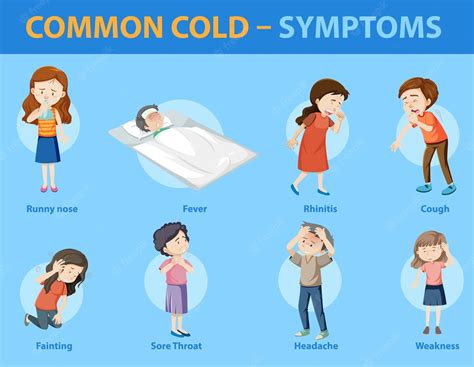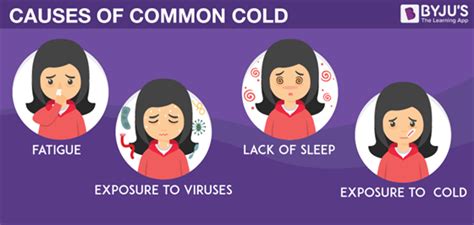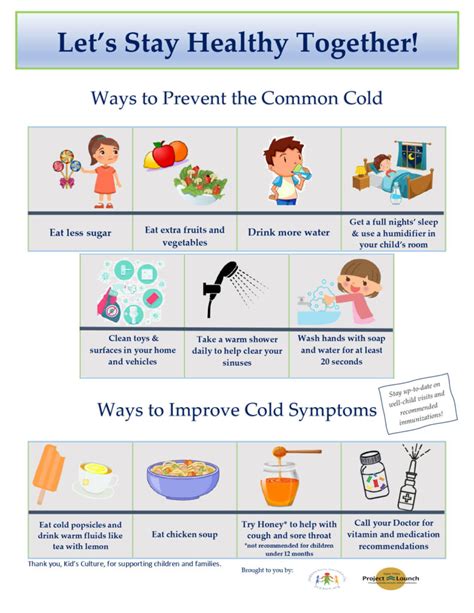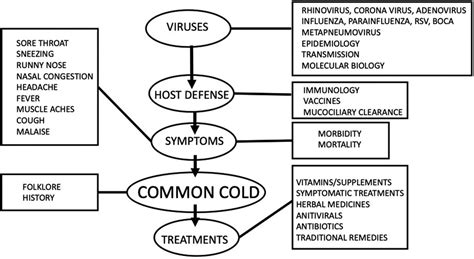Intro
The common cold is one of the most prevalent illnesses affecting individuals of all ages, backgrounds, and geographic locations. It is a viral infection that targets the upper respiratory system, leading to a myriad of uncomfortable symptoms. Understanding these symptoms is crucial for early diagnosis, effective management, and prevention of complications. The common cold is highly contagious and can spread through direct contact with an infected person or by touching contaminated surfaces. Despite its prevalence, many people are not fully aware of the symptoms of the common cold, which can sometimes be confused with other respiratory infections.
The symptoms of the common cold can vary from person to person, depending on the viral strain, individual immunity, and overall health. Generally, the onset of symptoms is gradual, with most people experiencing the first signs within 2-3 days of exposure to the virus. The initial symptoms may include a scratchy or sore throat, followed by sneezing, runny nose, and congestion. As the infection progresses, individuals may experience coughing, headaches, fatigue, and a general feeling of being unwell. In some cases, the common cold can lead to secondary infections, such as sinusitis, bronchitis, or pneumonia, especially in vulnerable populations like the elderly, young children, and those with compromised immune systems.
The common cold is often viewed as a minor illness, but its impact on daily life and productivity should not be underestimated. The symptoms can be debilitating, affecting not only the individual but also their family, social relationships, and work performance. Moreover, the common cold can have significant economic implications, with billions of dollars spent annually on over-the-counter medications, doctor visits, and lost workdays. Therefore, it is essential to recognize the symptoms of the common cold, understand its causes and risk factors, and explore effective prevention and treatment strategies to mitigate its effects.
Symptoms Of Common Cold

The symptoms of the common cold can be categorized into two main groups: early and late symptoms. Early symptoms typically appear within the first 24-48 hours of infection and may include:
- Scratchy or sore throat
- Sneezing
- Runny nose
- Congestion
- Mild headache
- Fatigue These symptoms are usually mild and may resemble those of other respiratory infections, making diagnosis challenging.
Early Symptoms
As the infection progresses, individuals may experience late symptoms, which can be more severe and debilitating. These may include: * Coughing * Postnasal drip * Hoarseness * Sore muscles * Loss of appetite * Fatigue * Difficulty sleeping In some cases, the common cold can lead to secondary infections, such as sinusitis, bronchitis, or pneumonia, which require prompt medical attention.Causes And Risk Factors

The common cold is caused by a viral infection, with over 200 different viral strains identified. The most common culprits are rhinoviruses, coronaviruses, adenoviruses, and respiratory syncytial viruses. These viruses can spread through:
- Direct contact with an infected person
- Touching contaminated surfaces
- Inhaling airborne droplets
- Close proximity to an infected individual Certain risk factors can increase an individual's susceptibility to the common cold, including:
- Weakened immune system
- Poor diet
- Lack of sleep
- Stress
- Smoking
- Exposure to pollution
- Close living quarters
Risk Factors
Understanding the causes and risk factors of the common cold is essential for developing effective prevention strategies. By adopting healthy habits, such as frequent handwashing, maintaining a balanced diet, and avoiding close contact with infected individuals, individuals can reduce their risk of contracting the common cold.Prevention And Treatment

While there is no cure for the common cold, various prevention and treatment strategies can help alleviate symptoms and reduce the risk of complications. These may include:
- Over-the-counter medications, such as pain relievers and decongestants
- Rest and hydration
- Warm liquids, such as tea or soup
- Saline nasal sprays
- Humidifiers
- Steam inhalation In addition to these measures, individuals can take steps to prevent the common cold, such as:
- Practicing good hygiene, including frequent handwashing and avoiding close contact with infected individuals
- Maintaining a healthy diet, rich in fruits, vegetables, and whole grains
- Staying physically active
- Managing stress
- Getting adequate sleep
Home Remedies
Home remedies can also provide relief from common cold symptoms. These may include: * Honey, which has antimicrobial and anti-inflammatory properties * Ginger, which can help reduce nausea and congestion * Garlic, which has antimicrobial properties * Chicken soup, which can help ease congestion and provide essential nutrients * Echinacea, which may help boost the immune systemComplications And Secondary Infections

In some cases, the common cold can lead to secondary infections, such as sinusitis, bronchitis, or pneumonia. These complications can be serious and require prompt medical attention. Individuals with weakened immune systems, such as the elderly, young children, and those with chronic illnesses, are at higher risk of developing complications.
Secondary Infections
Recognizing the signs of complications and secondary infections is crucial for timely intervention. These may include: * Severe headache or facial pain * Thick, yellow or green nasal discharge * Coughing up blood or rust-colored mucus * Shortness of breath or difficulty breathing * Chest pain or tightness * Fever above 102°F (39°C)Conclusion And Next Steps

In conclusion, the common cold is a prevalent and debilitating illness that affects individuals of all ages and backgrounds. Understanding its symptoms, causes, and risk factors is essential for effective prevention and treatment. By adopting healthy habits, practicing good hygiene, and seeking medical attention when necessary, individuals can reduce their risk of contracting the common cold and mitigate its effects. If you have experienced symptoms of the common cold or have concerns about your health, consult with a healthcare professional for personalized advice and guidance.
We invite you to share your thoughts and experiences with the common cold in the comments section below. Have you found any effective home remedies or prevention strategies? What are your favorite ways to manage symptoms and stay healthy during cold and flu season? Join the conversation and help others by sharing your insights and advice.
What are the most common symptoms of the common cold?
+The most common symptoms of the common cold include a scratchy or sore throat, sneezing, runny nose, congestion, mild headache, and fatigue.
How can I prevent the common cold?
+To prevent the common cold, practice good hygiene, including frequent handwashing and avoiding close contact with infected individuals. Maintain a healthy diet, stay physically active, manage stress, and get adequate sleep.
What are some effective home remedies for the common cold?
+Some effective home remedies for the common cold include honey, ginger, garlic, chicken soup, and echinacea. These can help alleviate symptoms and provide essential nutrients.
